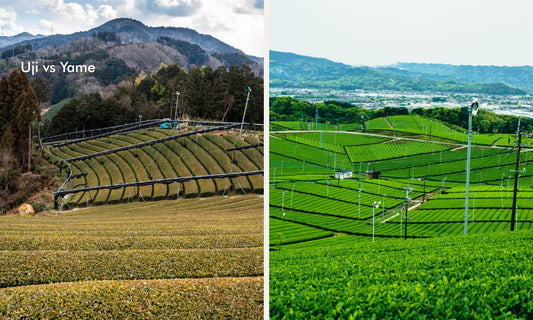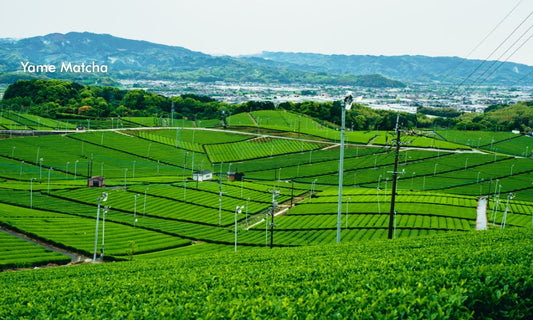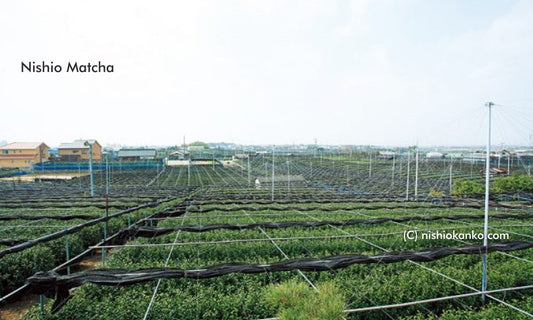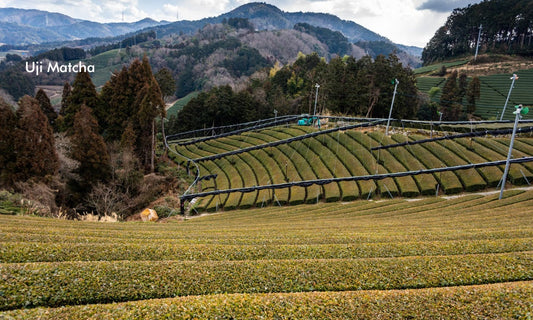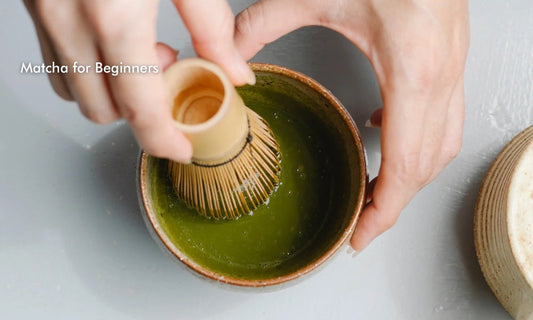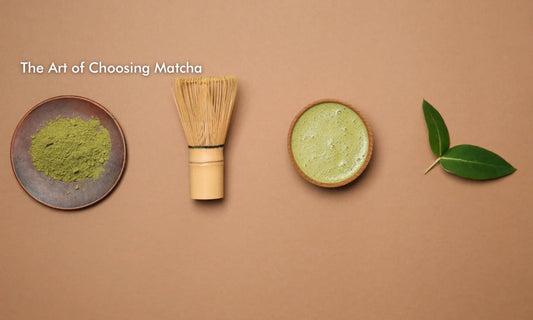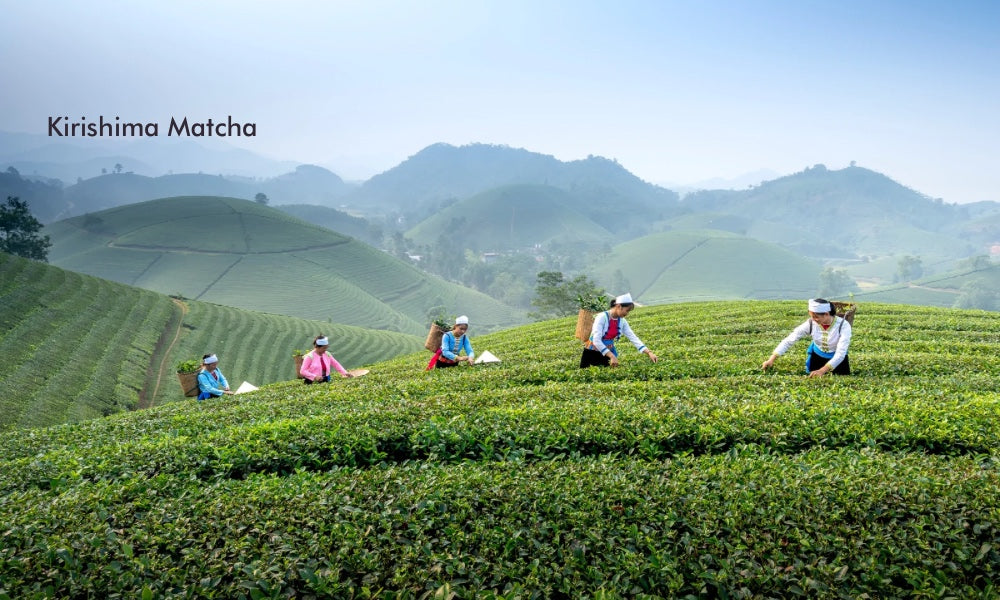
Kirishima Matcha: The Sublime Distinction of Japan's Mist-Kissed Tea and How to Savor It
Share
Where Mists Meet Tea: Kirishima’s Lands and Legacy
The Landscape that Nurtures Extraordinary Leaves
Tucked along the foothills of the Kyushu mountains, Kirishima is both a name and a revelation—a place where mists drift between volcanic peaks and valleys. Here, sunlight dances in gentle rhythms, softened by morning fog and balanced by brisk temperature shifts between day and night. Beneath the tea roots, mineral-rich ash soils and pristine spring water create a world in which Camellia sinensis flourishes slowly, storing flavor and vitality deep within its fibers.
The terroir is unmistakable: abundant humidity and a silken veil of fog shelter the leaves, keeping them supple and luminous. This gentle embrace lends Kirishima matcha its signature softness—an umami and depth as finely wrought as the climate itself.
The region’s famed “Shirasu” plateau, a volcanic tuff formation, provides soil that drains effortlessly while feeding the roots with rare minerals. In spring, the first flush arrives earlier here than almost anywhere else in Japan, a harbinger of the new season. Even the daily dialogue between sun and shadow imprints an elegant sweetness and layered aroma, details that linger in every cup.
Centuries in the Making: Kirishima’s Place in Tea History
Kirishima’s story in tea stretches back to the medieval Kamakura period, its origins entwined with wandering monks who brought seeds and wisdom from ancient centers like Nara. Cultivation blossomed under feudal governance, establishing ""Kirishima-cha"" as a household name since the Edo era. The Meiji period saw influences from Uji—a region often regarded as the pinnacle of Japanese matcha—infusing new techniques, and postwar innovation has only expanded Kirishima’s prowess.
Today, you'll find an uncommon coexistence of heritage and invention: artisans hand-pluck leaves just as their ancestors did, even as modern machinery and organic certification (notably, leading rates of JAS Organic acreage) propel the region forward. Kirishima teas have earned repeated gold at national competitions, including consecutive best-in-Japan distinctions in recent years. A legacy both historic and deeply alive.
Nature’s Imprint on Taste
Kirishima’s soils brim with minerals, and the prevailing mist acts as a natural filter, tempering photosynthesis and gently reducing astringency. Many leaves are processed with a light, “asamushi” steaming, rolled into needlelike forms—a method that preserves the tea’s delicacy and allows the faint, almost ethereal sweetness of theanine to thread through each sip.
The result is a liquid tapestry: forest-green, crystal-bright, with a finish that dissolves cleanly and lingers only as a memory. Wild birds, insects, and native flora abound among the tea rows, a subtle proof that the vitality and balance of the land is distilled into every bowl.
The Character of Kirishima Matcha: Color, Aroma, and a Quiet Depth
A Feast for the Senses: Hue, Texture, and Foam
Kirishima matcha sets itself apart from the very first glance. Its powder glows in vivid, almost translucent green. When whisked, the result is a creamy, froth—fine as spun silk, leaving a pristine emerald ring around the rim of your bowl. The texture, too, is unmistakable: neither heavy nor chalky, it dissolves in the mouth like velvet, its foam light yet persistent.
Aromatic Grace, Lingering Sweetness
Lift a bowl and you’ll find echoes of spring: a fresh, almost leafy fragrance, underscored by savory notes reminiscent of seaweed or toasted nori. On the palate, Kirishima reveals a restrained sweetness—umami that opens quietly, carrying a cool, refreshing clarity and a finish that is at once understated and profound.
Bitterness and harshness step back, allowing subtler virtues to linger—an experience well-suited even for younger palates or those approaching matcha for the first time. The aftertaste is long, gentle, and restorative. One might call it the art of savoring the space between flavors.
Kirishima in Dialogue With Other Regions
| Region | Color | Fragrance & Aroma | Umami | Bitterness/Astringency |
|---|---|---|---|---|
| Kirishima | Radiant deep green | Fresh and gentle, hint of nori | Elegant, mellow | Restrained, lingers softly |
| Uji | Intense, vivid green | Robust, leafy, complex | Rich and full-bodied | Balanced by earthiness |
| Nishio | Paler green | Bright, grassy, lively | Sparkling, refreshing | Pleasant, brisk bitterness |
Even in the context of Kagoshima’s other noted teas—such as Chiran—Kirishima stands out. Chiran’s “deep steamed” teas yield a profound color and dense mouthfeel. By contrast, Kirishima’s “light-steamed” approach preserves transparency, freshness, and an almost weightless finish. Each nuance in processing—every second of steam, every deft turn of the hand—manifests in the character of the cup.
Cultivation with Conscience: How Kirishima Matcha Is Crafted
Where Tradition Meets Innovation
Matcha from Kirishima is the product of a dialogue between eras. Elite leaves are harvested by hand, then shaded—an age-old practice that softens sharpness and heightens sweetness. After plucking, the leaves become “tencha,” awaiting their destiny as matcha.
Temperature is precisely controlled throughout, and tencha is ground in granite mills—a ritual that blends sensory intuition with modern data analytics. Each decision, from leaf selection to the final particle size, is an act of thoughtfulness.
Producers here work with a wide array of cultivars and processing techniques, maintaining classic “asamushi” methods even as they manage some of the largest JAS organic-certified tea gardens in the nation. Craft and technology pursue perfection side by side, in a process that never stops evolving.
Organic Ideals and Sustainability in Every Leaf
In Kirishima, reducing chemical inputs is more than a trend—it is a foundational commitment. Many growers hold JAS organic certification; fields might be tended by hand, with weeding performed not by machines but skilled hands, or even left to coexist with nurture-promoting flora.
Environmental protection is inseparable from taste—yielding teas that are better, not just for the palate, but also for land and body. For international buyers and local connoisseurs alike, this ethos is its own mark of quality.
Guardians of the Land, Keepers of Quality
Producers maintain a watchful intimacy with their fields, from careful pruning to meticulous timing of harvests and shading. Even small batches are tended with uncompromising skill, a sign not merely of craft, but of philosophy.
Traceability is prized as highly as taste. Stories persist of Kirishima's most ancient tea trees, some still living since the late Edo era, venerated as symbols of longevity and reverently offered to local shrines. Kirishima’s tea, in sum, embodies both the rootedness of history and the enduring promise of renewal.
Esteem in Japan and Abroad: The Position of Kirishima Matcha in Today’s World
Awards and Accolades: A Chronicle of Distinction
Kirishima matcha is no stranger to acclaim, having garnered numerous gold medals at Japan’s national tea exhibitions and high marks in organic matcha categories—honors not lightly given, nor easily won. The prestige echoes through corridors of venerable tea shops, specialty patisseries, and celebrated wagashi houses.
These laurels are more than mere trophies; they signal respect across generations, resonating wherever true tea is sought and cherished.
An Emerging Icon Abroad
Exports of Kirishima matcha have surged, particularly to Europe and North America—markets captivated by authentic flavor and uncompromising organic standards. Its presence on the menus of discerning cafes and refined restaurants continues to grow.
Whether at global barista competitions or cultural showcases, the Kirishima name is now whispered among connoisseurs and innovators alike, its mystique steadily deepening far beyond Japanese shores.
What the World Says
– “Its color is striking; the taste, gentle yet rich.”
– “Authentic matcha, sustainably produced—the flavor lingers like a memory.”
In global markets, it is this synthesis of sustainability and excellence that elevates Kirishima above trend, marking it as a true original.
Choosing, Brewing, and Savoring: The Art of Kirishima Matcha
How to Select—Signs of the Genuine Article
- Look for JAS or organic certification
- Note the grade: usucha (thin tea), koicha (thick tea), or culinary use
- Verify regional authenticity: Kirishima labeling
- Seek information on harvest period and year
- Investigate the producer and traceability back to farm or factory
Another delight: Kirishima’s new teas often appear from early April, ahead of the nation's rush—the pleasure of “first-pick” freshness is a secret encoded in labels and timing alike. In Kirishima, deciphering a matcha label is as evocative as reading a poem: every mark a key to trust.
Preparing with Poise—A Brief Ritual
- Have at the ready a tea bowl, bamboo whisk, and scoop
- Use soft water, heated to no more than 70–80°C/158–176°F
- Place 2 grams of matcha in the bowl, knead gently with 30ml water, then whisk briskly with the remainder
- Employ a deft, light wrist; the aim is a fine, cloudlike froth—best sipped while the foam still dreams atop the cup
In this moment—when the green crests rise, sweet and quiet, with subtle bitterness beneath—one finds not just refreshment, but a journey through Kirishima’s silent valleys.
Three Inspired Recipes to Bring Kirishima into Everyday Life
-
Kirishima Matcha Pudding
– The pristine umami of matcha elevates simple creaminess; each spoonful a contrast of silk and shade. -
Organic Matcha Cookies
– Stone-milled matcha kneaded into the dough: a bite that carries spring’s green fragrance with every crumb. -
Japanese Fries with Matcha Salt
– For a subtle twist, dust fries, vegetables, or even tempura with a matcha-infused salt. A verdant touch that pairs as well with craftsmanship as it does with play.
Conclusion: Experience the Essence of Kirishima Matcha
Kirishima matcha is, above all, the quiet union of nature’s spirit and the drinker’s senses. To select, to whisk, to sip—these are rituals of appreciation, gateways to stillness and delight. If your curiosity is stirred, let your first cup be an invitation: decode the label, listen to the mist, and allow Kirishima’s story to unfurl upon your tongue. Here, in each encounter, a world reveals itself—one exquisite sip at a time.

